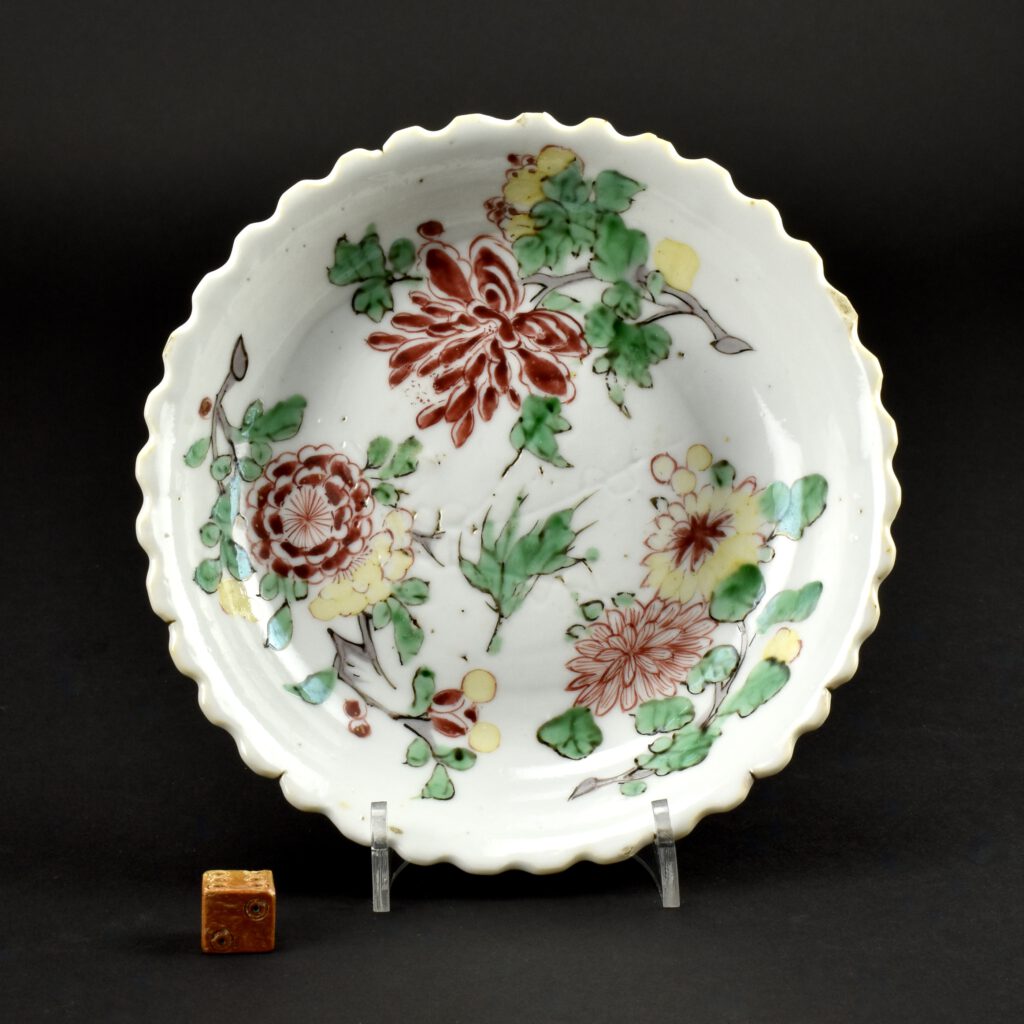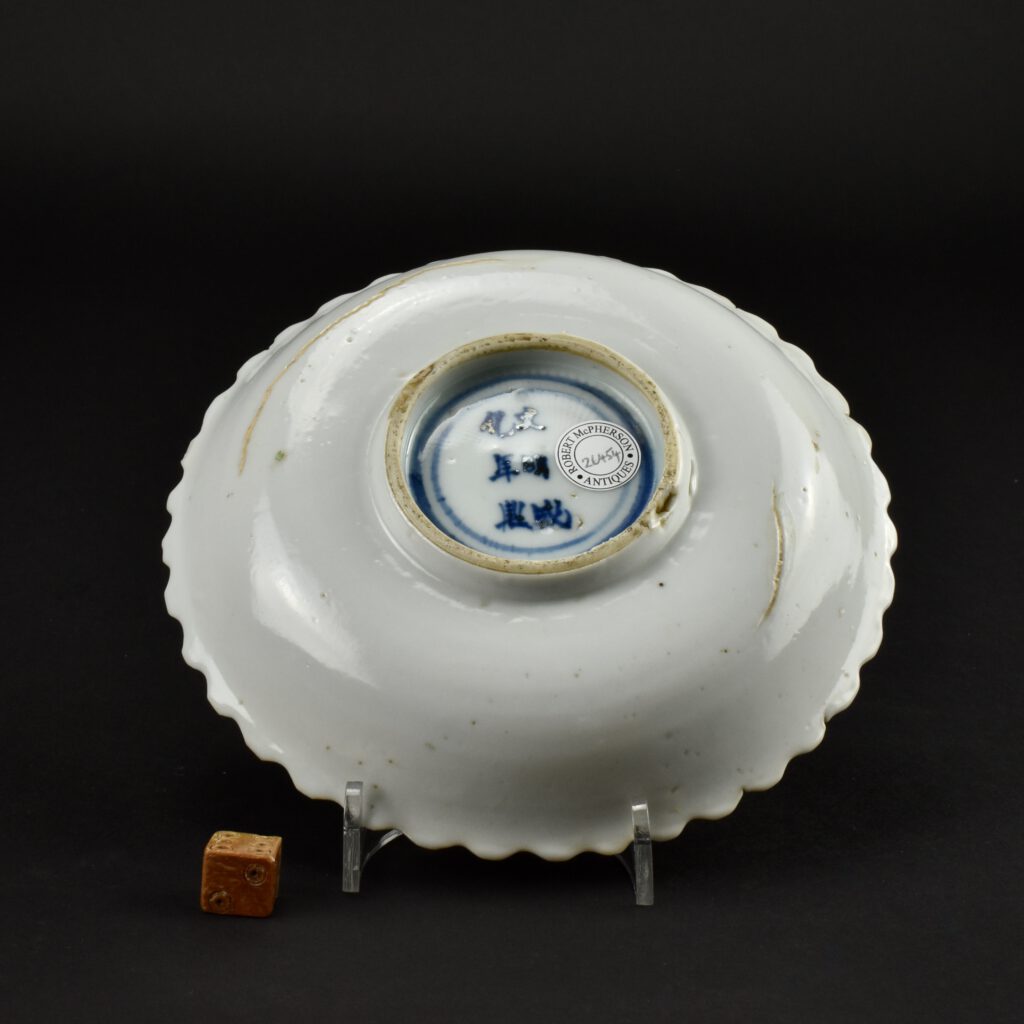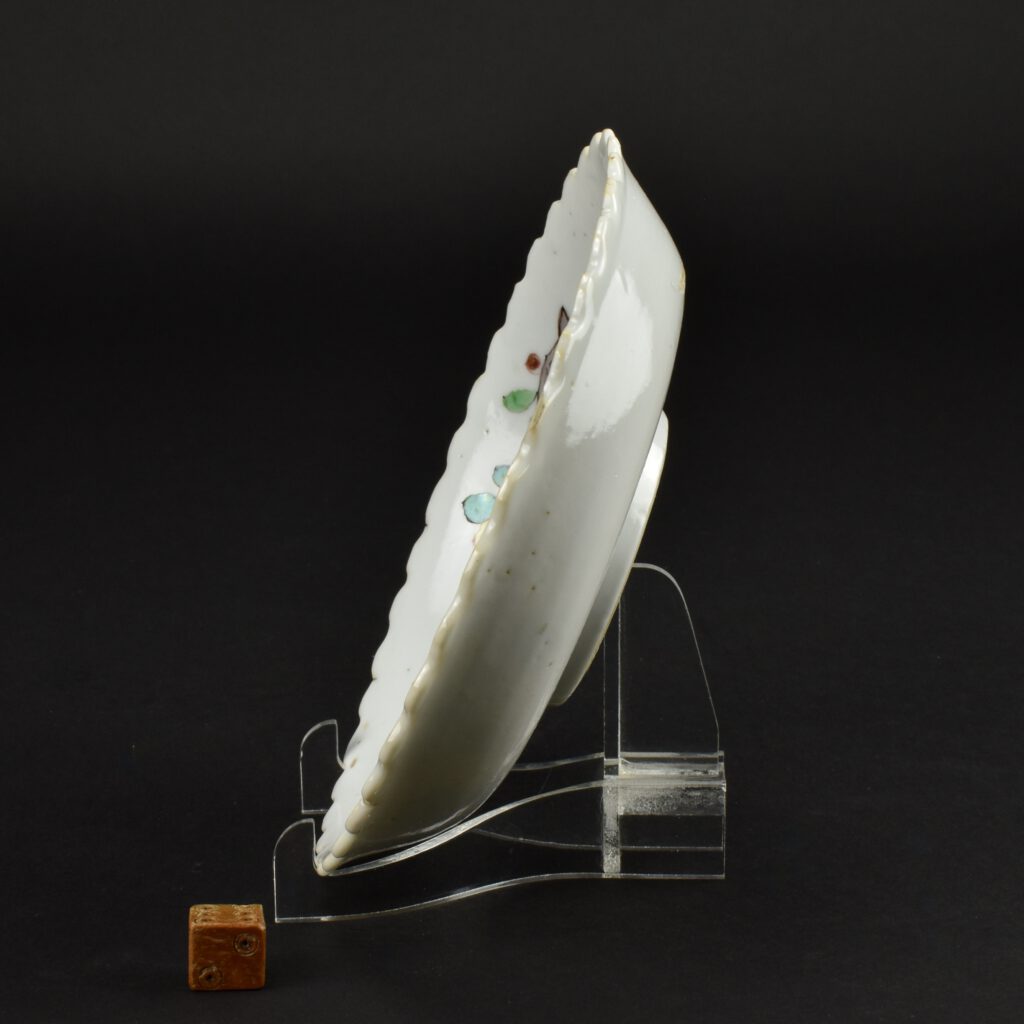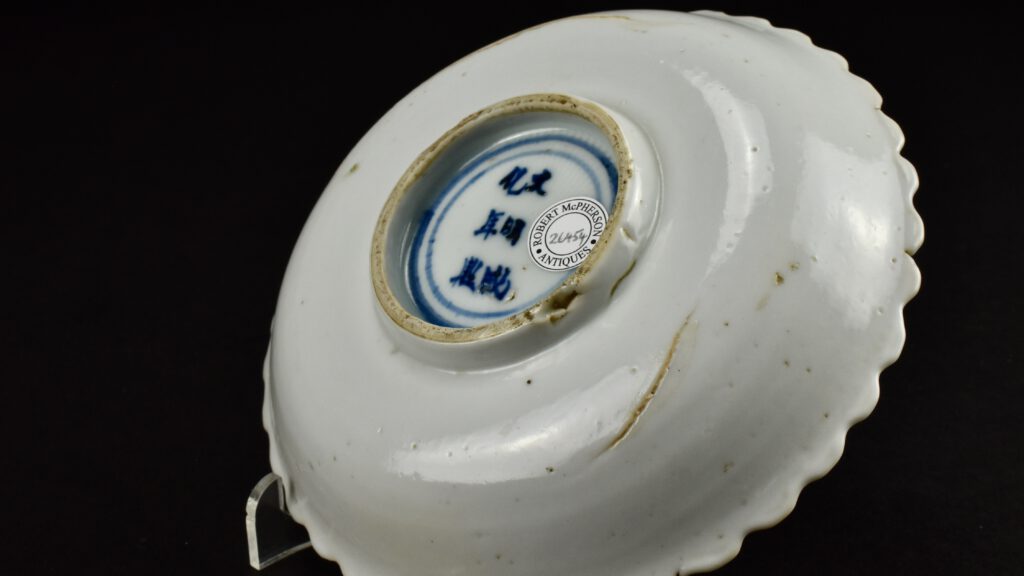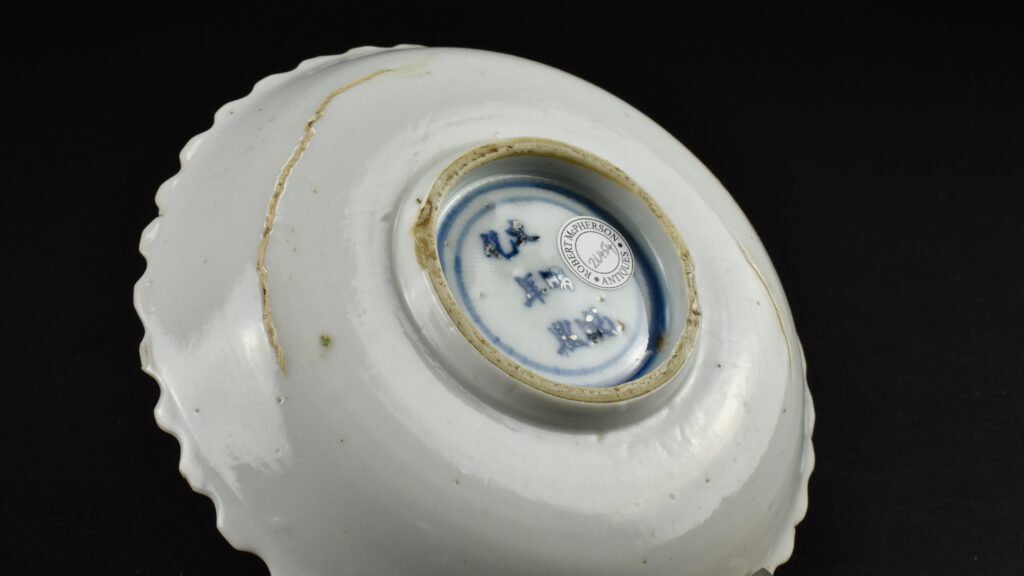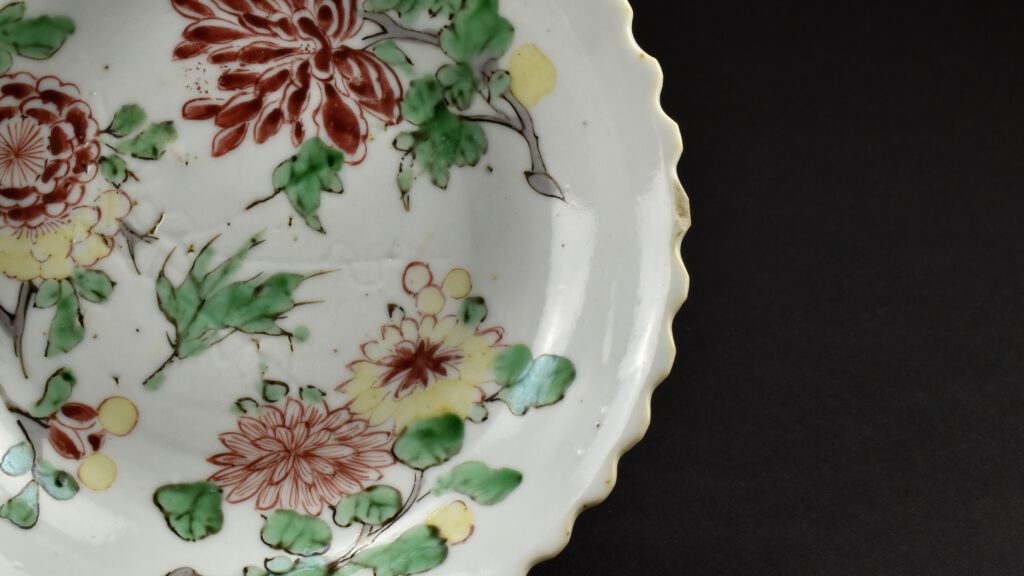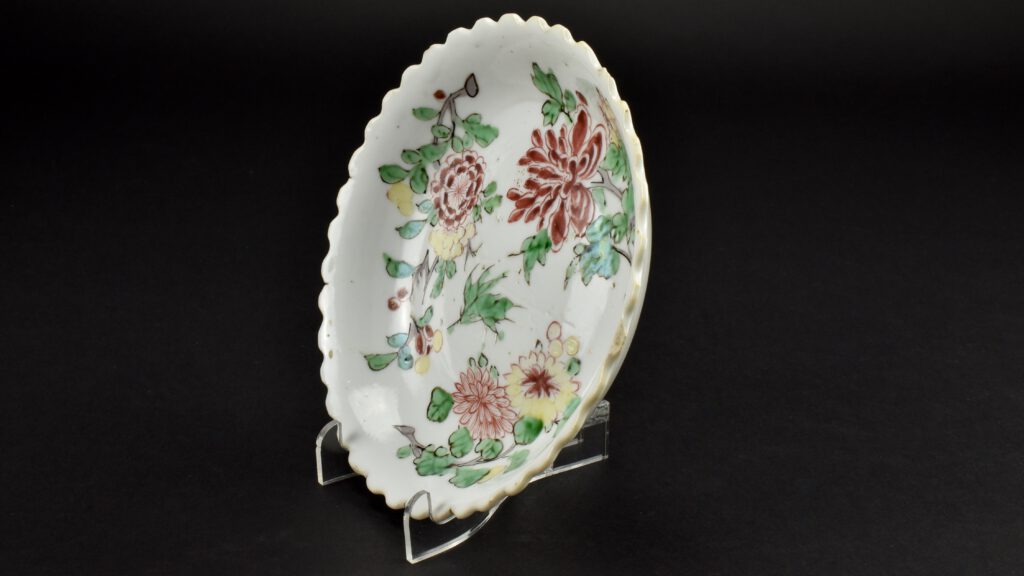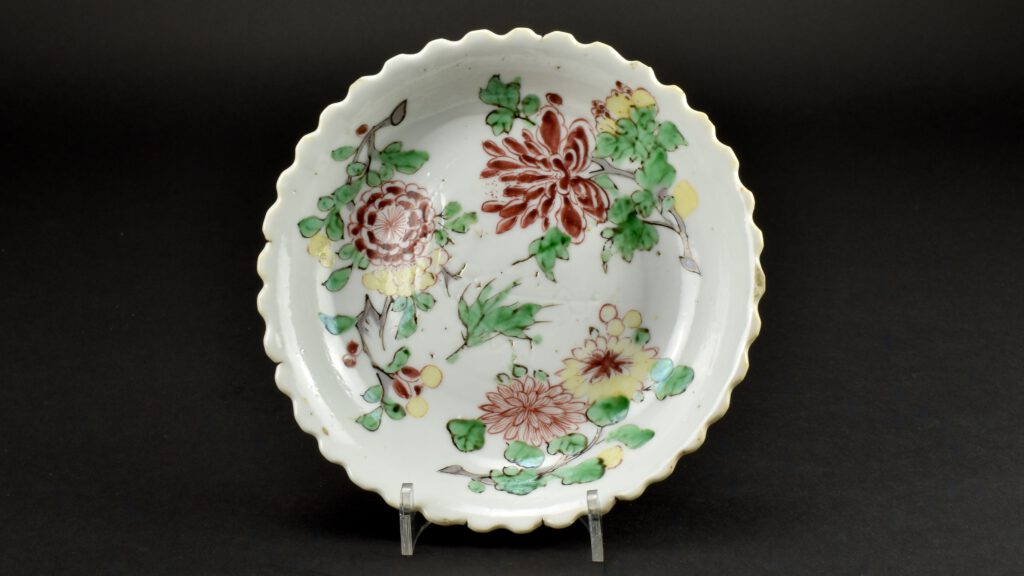
Ming Porcelain Ko-akae Dish Made for the Japanese Market
A Ming Porcelain Ko-akae Dish Made for the Japanese Market, Chongzhen Period 1628-1645. This foliated Transitional period porcelain dish is painted with bright enamels over an incised design of a flowering prunus branch. The incised decoration is referred to as An hua 暗花 or hidden decoration in China. The enamelled flowers are chrysanthemum, tree peony. The finial flower might be a different type of chrysanthemum. The back has two large firing cracks, a feature which appealed to the Japanese sense of Wabi-Sabi. The aesthetic of the imperfect. The base has an apocryphal Chenghua six-character mark (Chenghua, Ming dynasty 1465-1487).
See below for more photographs and references.
SOLD
- Condition
- A flat chip to the foliate edge. Two tiny glaze frits.
- Size
- 14.4 cm (5 3/4 inches).
- Provenance
- N/A
- Stock number
- 26454
Information
Peony
Peonies are the most commonly encountered flower on Chinese porcelain, indeed in Chinese art in general. There are two cultivated types of peony commonly depicted, the tree peony Paeonia Suffruicosa (Mudan) and the herbaceous peony P.Lactiflora (Shaoyao). Both have rich exuberant flowers with thin silk like petals but the plants are rather different to each other. The tree peony is not in fact a tree but a deciduous shrub, sometimes rather large and sprawling, it has irregular woody stems. It shares a similar leaf and flower form to the herbaceous peony but they are not close in other ways. The Chinese refer to the peony as the `King of flowers` and are seen as equivalent to the first rank among officials. The flowers are closely associated with royalty because they have been grown in imperial gardens since the Sui dynasty (581-618). The peony is one of the flowers of the four seasons and represents the Spring. It symbolizes wealth and honour, honour in the sense of high rank, having an official position, or high social status.
Ming Porcelain for Japan
During the late Ming Period the Chinese made a large among of porcelain for the Japanese market, it was made from the Wanli period (1573-1620) and ended in the Chongzhen period (1628-1644), the main period of production being the 1620`s and 1630`s. The porcelain objects produced were made especially for the Japanese market, both the shapes and the designs were tailored to Japanese taste, the production process too allowed for Japanese aesthetics to be included in the finished object. Its seams firing faults were added, repaired tears in the leather-hard body were too frequent to not, in some cases, be deliberate. These imperfections as well as the fritting Mushikui (insect-nibbled) rims and kiln grit on the footrims all added to the Japanese aesthetic. The shapes created were often expressly made for the Japanese tea ceremony meal, the Kaiseki, small dishes for serving food at the tea ceremony are the most commonly encountered form. Designs, presumably taken from Japanese drawings sent to China, are very varied, often using large amount of the white porcelain contrasting well with the asymmetry of the design.
